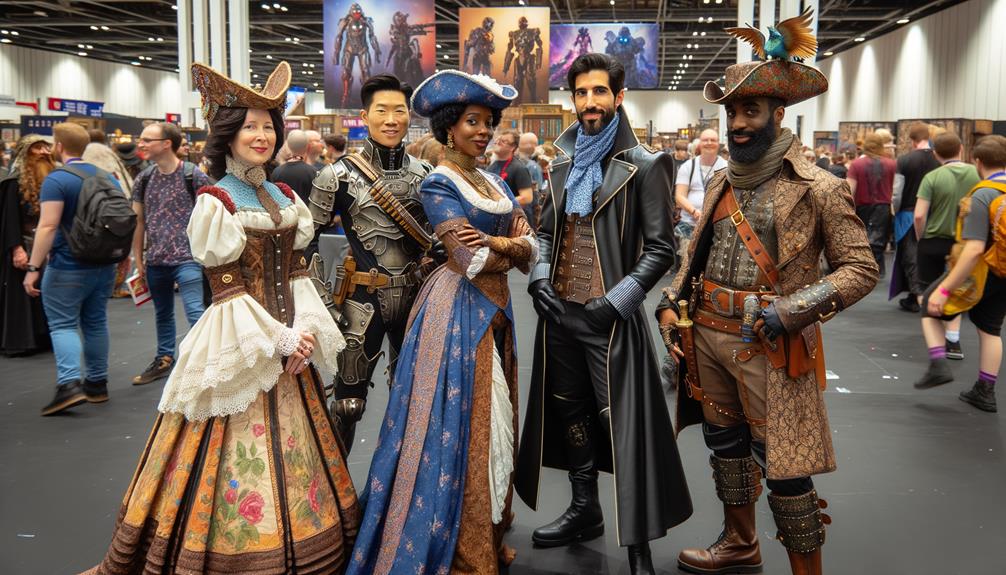I'm passionate about using sustainable practices in costume design. By selecting biodegradable fabrics and natural dyes from plant waste like onion skins, I can create pieces that not only look stunning but also respect the environment. Zero-waste pattern cutting and repurposing recycled materials, such as curtain linings, reduce waste and give new life to old fabrics. Costume rental and modular construction enhance reuse, embodying a more mindful approach to fashion. Standards like Global Organic Textile Standard and Cradle to Cradle Certified guarantee ethical practices throughout. Discovering these sustainable methods reveals a path towards a more eco-conscious wardrobe.
Embedding Sustainability in Design
When designing sustainable costumes, it's crucial to thoughtfully select materials that minimize environmental impact throughout the entire lifecycle. In my experience with costume design, embracing sustainable practices isn't just about the final product; it's about every step in the production process. Incorporating new materials like biodegradable fabrics and those derived from textile recycling can transform how we approach costume making.
I've found that utilizing sustainable materials doesn't mean sacrificing creativity. In fact, it opens doors to innovative textures and colors, especially when combined with natural dyeing methods. These materials, along with zero-waste pattern cutting, ensure our designs are both beautiful and conscientious.
Additionally, costume rental has become an essential part of my sustainable practice. By reusing and repurposing existing garments, we reduce waste and breathe new life into each piece. Modular construction methods further enhance this, allowing for easy disassembly and reuse of costume components.
Collaborating with fellow designers and sustainability experts has enriched my perspective, making each project a shining example of responsible costume design. Through these practices, I believe we can create a more sustainable and inspiring future for our industry.
Sustainable Sourcing and Materials
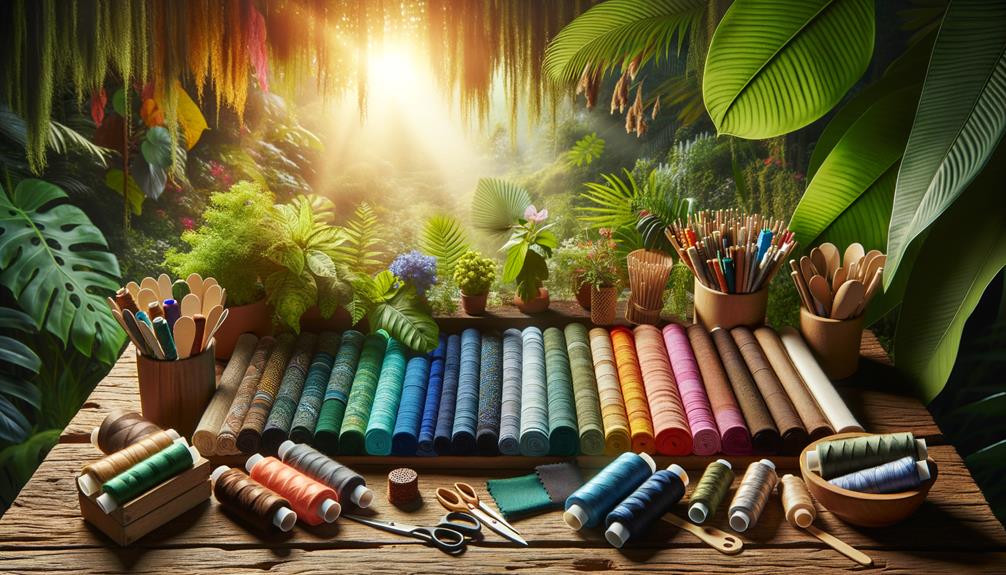
In my pursuit of sustainable sourcing and materials, I've discovered that the origins of our fabrics and dyes can have a profound impact on both the environment and the story our designs tell. Sustainable costume creation starts with the textiles themselves. For instance, using recycled curtain linings from organizations like The Prince's Foundation provides a unique and eco-friendly base for our garments. These recycled textiles, after meticulous washing and cleaning to remove impurities, offer a canvas ready for natural dyes derived from food and plant waste like onion skins, marigolds, and rose petals.
As designers, embracing these new practices not only enriches our fashion narratives but also reduces our environmental footprint. Zero-waste pattern cutting techniques are another innovative approach, minimizing fabric waste and making the most out of every piece. Additionally, exploring material exchanges, rental schemes, and second-hand sources allows us to tap into a more responsible supply chain, discovering textiles that are both environmentally friendly and distinctively beautiful.
Each of these practices aligns with sustainable values and pushes the boundaries of traditional costume design, fostering a future where fashion tells a story of respect for our planet.
Eco-Friendly Production Techniques
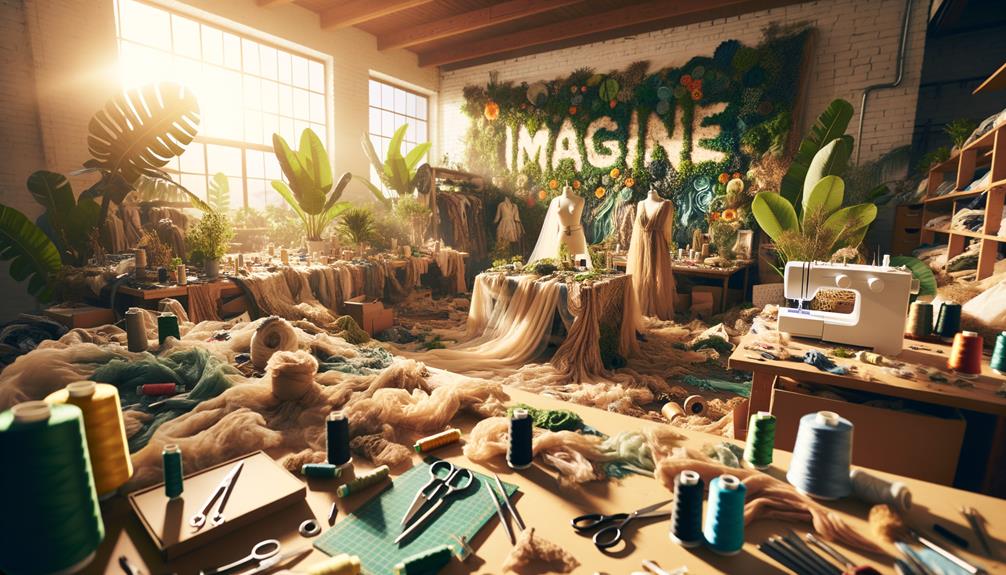
Building on the foundation of sustainable sourcing, I've discovered that eco-friendly production techniques further elevate our commitment to creating environmentally conscious costumes. By integrating these methods, we're not just reducing greenhouse gas emissions but also setting new standards within the fashion industry. Collaborating with a natural dye specialist and sustainability consultant has been invaluable, guiding us to use plant-based dyes from food and plant waste such as onion skins, marigold, and rose petals. These natural dyes yield vibrant, sustainable colors that enhance the aesthetic of our costumes.
In our costume departments, cutting patterns to minimize waste has become a fundamental practice, ensuring every piece of fabric is utilized. Leftover scraps aren't discarded; instead, they're repurposed into quilts, contributing to our goal of reducing waste. Additionally, we've embraced the use of second-hand materials, like recycled curtain linings from The Prince's Foundation, which undergo multiple over-dye sessions to achieve the perfect look.
Here's a snapshot of our eco-friendly production techniques:
- Natural dyeing with food and plant waste
- Collaboration with sustainability experts
- Pattern cutting to minimize waste
- Repurposing fabric scraps into quilts
- Sourcing and over-dyeing second-hand materials
Through these practices, we create sustainable costumes that honor both artistry and the environment.
Managing Costume Lifecycles
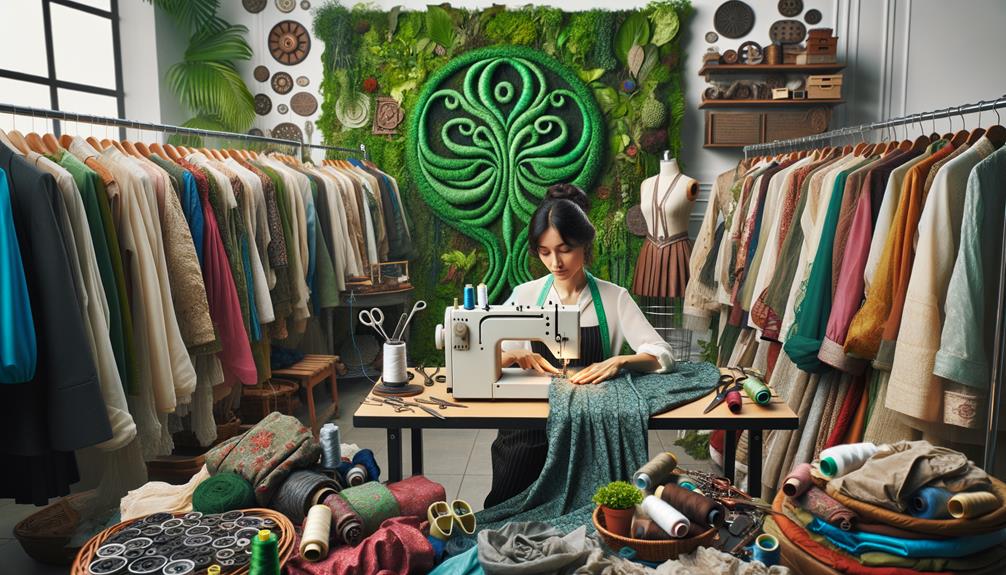
Reducing the environmental impact of our costumes requires thoughtful management of their entire lifecycle, from creation to disposal. As a costume designer, I'm keenly aware that every decision we make has environmental consequences. From the moment we create costumes, we need to consider their future. Large production companies may have the advantage of costume warehouses filled with reusable pieces, but smaller productions often struggle to access sustainable options. This disparity challenges us to innovate and develop greener practices across the industry.
One solution is expanding costume warehouses to include more recent styles, ensuring these resources are available to all. Additionally, promoting the use of sustainable cleaning methods can greatly reduce the harmful solvents released into the environment. Organizations like Earth Angel inspire us by donating reusable clothing and recycling textile scraps, giving garments new life and a positive impact on our planet. By implementing textile recycling programs and ensuring fair working conditions, we can further diminish the negative environmental footprint.
Ultimately, responsibly managing costume lifecycles means we're not just crafting beautiful pieces for the screen – we're also contributing to a more sustainable future for our industry and our world.
Industry Standards and Certifications
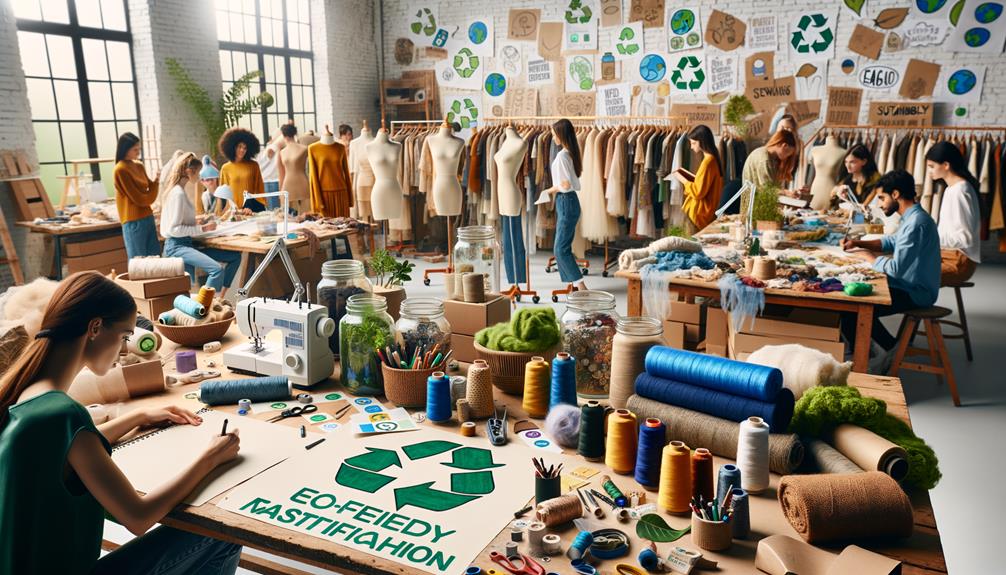
Navigating industry standards and certifications can feel complicated, but they're vital for ensuring our costume designs are ethical and sustainable. These standards help us lower our environmental impact and guarantee the wellbeing of workers and the planet. Sharing knowledge between designers is key, as understanding these certifications can transform how we approach sustainability.
The Global Organic Textile Standard (GOTS) guarantees organic fibers and strict environmental and social criteria throughout the supply chain. The Cradle to Cradle Certified Product Standard evaluates design and manufacturing based on material health, recycling, renewable energy, water management, and social fairness. The Fair Trade USA Certification verifies ethical labor practices, including fair wages and safe working conditions. The Oeko-Tex Standard 100 tests and confirms that textile products are free from harmful substances. The Bluesign System ensures textiles are safe for the environment, workers, and consumers by evaluating chemicals, processes, and resource use.
Frequently Asked Questions
What Are the Sustainable Design Practices in Fashion Industry?
When it comes to sustainable design practices in the fashion industry, there are a few key elements to consider. Using recycled materials is a common approach, as it reduces waste and gives new life to existing resources. Zero-waste pattern cutting is another technique, where designers work to minimize leftover fabric from garment production. Ensuring fair labor practices throughout the supply chain is also crucial, valuing the people behind the clothes we wear.
How Do You Make a Sustainable Costume?
When making a sustainable costume, I use recycled fabrics, natural dyes, and zero-waste techniques. I collaborate with experts to create modular designs. I also prioritize eco-friendly cleaning methods and plan for the costume's disposal.
How to Be a Sustainable Fashion Designer?
To be a sustainable fashion designer, I focus on using eco-friendly materials, embrace circular design, and collaborate with ethical suppliers. I also practice zero-waste techniques and educate consumers, ensuring my creations are both innovative and environmentally responsible.
I prioritize natural, renewable, and recycled fabrics over synthetic materials that harm the environment. By designing with circularity in mind, I aim to create pieces that can be easily repaired, upcycled, or recycled at the end of their lifespan. Working with transparent, ethical suppliers is crucial to maintaining high social and environmental standards throughout my supply chain.
Additionally, I employ zero-waste methods to minimize fabric waste, such as pattern-making techniques that optimize material usage. Educating consumers about sustainable fashion choices is also a key part of my approach. I want my clients to understand the environmental impact of their purchases and feel confident that my designs are produced responsibly.
Ultimately, my goal is to create fashionable, durable garments that reduce waste and environmental harm. By combining eco-friendly materials, circular design, and ethical practices, I strive to be a leader in the sustainable fashion movement.
What Is Sustainability in the Apparel Industry?
Sustainability in the apparel industry involves creating clothing with minimal environmental impact. This often means using eco-friendly materials, ethical production methods, and designing timeless pieces to reduce waste and promote a circular economy. Brands focused on sustainability aim to minimize their carbon footprint throughout the supply chain, from sourcing to manufacturing to delivery. By prioritizing sustainable practices, they hope to lessen the industry's strain on natural resources and ecosystems. Ultimately, the goal is to produce fashion that is kinder to the planet without sacrificing style or quality.
Conclusion
Reflecting on my journey toward sustainable costume design, I'm struck by the impact of thoughtful choices. I recall a production where we repurposed vintage fabrics, giving them new life on the stage. It wasn't just cost-effective; it brought a unique richness to the characters. Embracing sustainability isn't just a trend – it's a commitment to creativity and responsibility. By incorporating these practices, we craft not just costumes, but a more mindful future for the arts.



